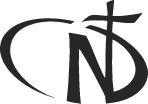- By Sr. Mary Valerie Schneider
Advent is a time for delight and depth. The weeks are sugar-sprinkled with concerts, parties, favorite shows, Christmas cards from long-time friends. Meanwhile, the quiet of snow beckons reflection. The book Three Wise Women by D. D Mackall provided spiritual beauty for me like cherished tree decorations, one ornament at
- By Sr. Mary Valerie Schneider
On an icy road two women skidded and found themselves in a car, the front wheels hanging on a cable. It was impossible for them to lift the car. Before I-phones, they decided to stand there until help came. After a time, a man offered to help and managed to
- By Sr. Mary Valerie Schneider
Perhaps Mary and Joseph wondered what Jesus’ first words would be. One might expect the Hebrew words equivalent to “mama” and “dada.” Either word would have made his parents proud. The word for “father” (abba) would have deep meaning, since it would reflect divine sonship—although that would take maturity, a
- By Sr. Mary Valerie Schneider
Unlike TV shows and Christmas commercials, the presents brought by Santa to my house were never wrapped with colorful paper and ribbon. Gifts came in brown grocery bags, and somehow my parents knew to which child the bag belonged. One Christmas I noticed a beautifully wrapped gift. It was really
- By Sr. Mary Valerie Schneider
Don’t you love stories, novels, movies, TV shows that have good endings? There’s something satisfying when the main character achieves his goal, when the reader or viewer puts down the book or turns off the program feeling his own life has been made better for the experience. Time has a
- By Sr. Mary Valerie Schneider
At this time of year I hear people decrying materialism, as if shopping for gifts is beneath our better selves. What’s the matter with matter (like decorations, toys, trees)? It’s energy! It’s interconnectedness! Nothing is only material; no gift or decoration is only material. There’s an energizing force that unites
- By Sr. Mary Valerie Schneider
Creation and the Incarnation of Jesus Christ seem like two separate events, but they form one process of God’s self-giving and self-expression. The process begins with “Let there be light!” The moment of the Big Bang starts the whole universe, which is full of Christ. The “body” of the universe
- By Sr. Mary Valerie Schneider
The First Sunday of Advent could also be called New Year’s Day. It’s the start of another Church Year, so I guess I can wish you a “Happy New Year!” I feel the hymns of Advent are so special; however, all hymns of all seasons affirm the ground our faith
- By Sr. Mary Valerie Schneider
On the holy-go-round of lectionary readings, we will soon be back in Year A, the year of Matthew. Because Matthew wrote for Jewish Christians, his writing has many references to the Hebrew Scriptures (Old Testament). Throughout Advent we will see that Jesus Christ is the longed-for Messiah and the fulfillment
- By Sr. Mary Valerie Schneider
One of Jesus’ closest followers relates the account. “You will receive power when the Holy Spirit comes down on you; then you are to be my witnesses in Jerusalem, throughout Judea and Samaria, yes, even to the ends of the earth” (Acts. 1:8). This we believed with our whole being.




